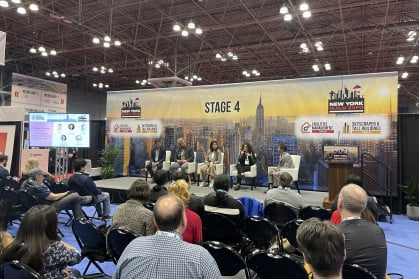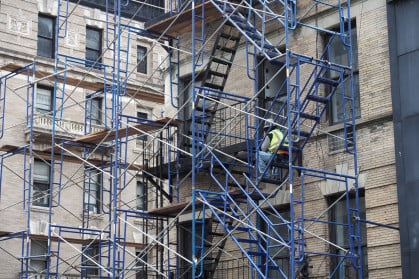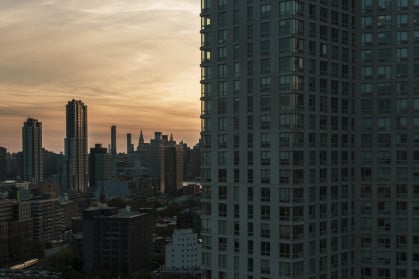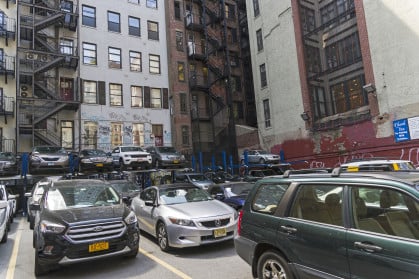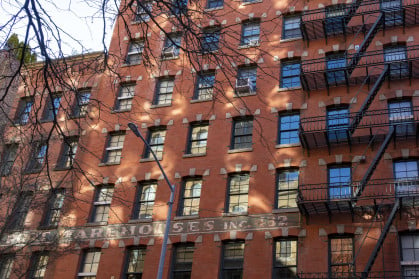What boards need to know about Local Law 97’s newly finalized rules
- Your building could avoid fines through 2029 by showing a ‘good faith’ effort to comply with the law
- The DOB can enter into an agreement with a building to avoid fines by creating a plan for compliance
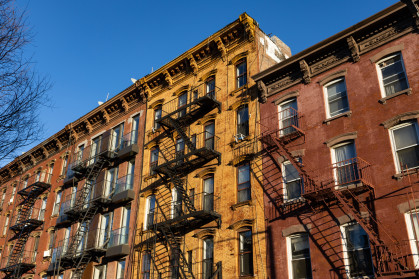
Responses to the final rules, released just two weeks before the law went into effect, have been mixed.
iStock
New year, new rules.
New York City released the final rules governing how Local Law 97, which requires buildings to cut their carbon emissions or face escalating fines, will be implemented this year. And there’s a lot your board needs to know.
The finalized rules offer a handful of ways buildings can avoid or lower fines through “good faith” efforts at decarbonization until 2029. It also limits a property owner’s ability to purchase renewable energy credits (RECs) to meet their emission caps.
Responses to the final rules, released just two weeks before the law went into effect, have been mixed. A handful of environmental groups, including Food & Water Watch, criticized the “loophole-riddle[d]” rules for allowing owners to “delay or entirely avoid pollution reductions,” while the Urban Green Council, which helped write Local Law 97, applauded its “forward-looking and actionable compliance pathways.”
As for condo and co-op buildings, most properties are in compliance with the law’s 2024-2029 emissions limits, said Rebecca Poole, director of membership at the Council of New York Cooperatives & Condominiums, an association of more than 1,500 buildings in NYC. While the rules’ provisions will help some buildings that have fallen behind, it’s the 2030 emissions limits Poole is worried about.
“The ‘good faith’ effort will be helpful to a couple of buildings that are way out of bounds and need help getting over the line,” Poole says. “But looking at 2030, we're going to hope that additional rules will take into account difficulties that buildings might have in reaching those thresholds.”
What’s in the new rules anyway?
Local Law 97, passed in 2019, aims to cap the carbon emissions of buildings larger than 25,000 square feet through 2050. But how those fines would be implemented has been hotly debated by the public, building owners, advocates, and city council members.
The newest package of rules describes how condo and co-op buildings can demonstrate a “good faith” effort to comply with Local Law 97, and as a result, avoid fines up until 2029, according to the DOB.
Read on for four key aspects of the rules.
1. An act of (good) faith
The DOB defines “good faith” efforts as keeping up with existing emissions-related laws, including filing a building emissions report for the previous year, an energy benchmarking report by May 1st of every year (under Local Law 84), and by upgrading its lighting (under Local Law 88).
Plus, a building also needs to meet at least one of a handful of other requirements, such as submitting a decarbonization plan by May 1st, 2025, or by providing evidence that work is underway to get a building on track to meet the 2024 to 2029 emissions limits.
DOB included the “good faith” exception because of the delays some buildings have faced in starting decarbonization efforts as a result of the pandemic and the “significant investments of time and other resources” required to meet Local Law 97.
But the “good faith” provision isn’t a get-out-of-jail-free card. If the DOB finds that an owner isn’t following through with their plan to meet the department’s emissions limits, the agency can hit them with fines for every year that they avoided penalties by claiming they were acting in “good faith,” according to a spokesperson for the DOB.
2. If disaster strikes
Buildings that experience a disaster—think hurricanes, floods, or fires—can avoid all penalties for the year the accident is claimed. The owner of the building, however, needs to prove that an “unexpected or unforeseeable” event occurred with photographs and a description of how the incident prevented them from meeting Local Law 97’s emissions caps.
3. Means for mediation
The rules also allow DOB to enter into a special agreement with an owner not to fine them, as long as the owner has filed the building’s annual emissions report and demonstrated “good faith” efforts to meet their emissions limits.
That agreement could also include a plan to bring the building into compliance with the law, though if the owner fails to follow its terms, DOB could then hit them with fines.
4. Limits on renewable energy credits
Owners can buy renewable energy credits to meet Local Law 97’s emissions limits, with a handful of restrictions.
These credits can only be used to offset emissions attributed to electricity use in a building, and not those from other sources, such as a gas-fired boiler. An owner can't rely only on renewable energy credits to skirt Local Law 97’s penalties either, according to DOB’s renewable energy credit policy, published in September.
If an owner files a decarbonization plan to try to qualify for a “good faith” effort exception, they cannot use renewable energy credits from 2024 to 2029 to offset their greenhouse gas emissions, according to the finalized rules.
DOB expects only 2 percent of NYC buildings that are “significantly over” the 2024 emissions limits to use renewable energy credits. Still, the environmental nonprofits have criticized the final rules for allowing landlords to buy their way out of complying with the law’s emissions limits.
The renewable energy credit program could see more changes in the coming years. The DOB noted that it will “revisit this policy as necessary to best achieve the goals of LL97 and associated air quality improvements,” in the finalized rules.
What should my board be doing?
Most condo and co-op buildings are already in compliance with the 2024 to 2029 carbon emissions limits, Poole says. (Roughly 89 percent of all NYC buildings already meet the 2024 requirement, according to the DOB).
But if your building is facing fines, there’s at least two steps your board should already be taking.
Decarbonization plan: If you haven’t already, your building should reach out to a professional to create a decarbonization plan, which needs to be filed by May 1st, 2025. Creating a decarbonization plan is one way to help prove that your building is making a “good faith” effort to meet the law’s requirements.
That plan will include an energy audit, which identifies different ways to make your building more energy efficient and has to be performed by a qualified energy auditor—a person with special credentials such as a registered design professional.
An audit can take up to a year to prepare, so it’s crucial to reach out early, Poole says. If your building needs renovations to bring it into compliance, you should start that work as soon as possible.
“Those buildings that haven't done an audit yet, they need to look for people now,” Poole says.
Find an auditor: If your board doesn’t know how to find a qualified energy auditor, Poole recommends reaching out to your property manager or the NYC Accelerator, the city’s Local Law 97 resource, for advice. And make sure to ask any potential auditor about deadlines.
“Anytime [your building] gets in touch with an [auditor], you will need to find out the timeline: how long will it take them to prepare the audit, how long will it take them to prepare the report, how long will it take them to do the work?” Poole says.
The fees for missing deadlines can be quite steep. If your building doesn’t file its emissions report within 60 days of the deadline, it could get hit with a fine of 50 cents per square foot of the building for every month you fail to turn in the report. (For a building of 30,000 gross square feet, the fine would be $15,000 per month). Failing to file a decarbonization plan carries a $10,000 fine.
Sign Up for our Boards & Buildings Newsletter (Coming Soon!)
Thank you for your interest in our newsletter. You have been successfully added to our mailing list and will receive it when it becomes available.


















